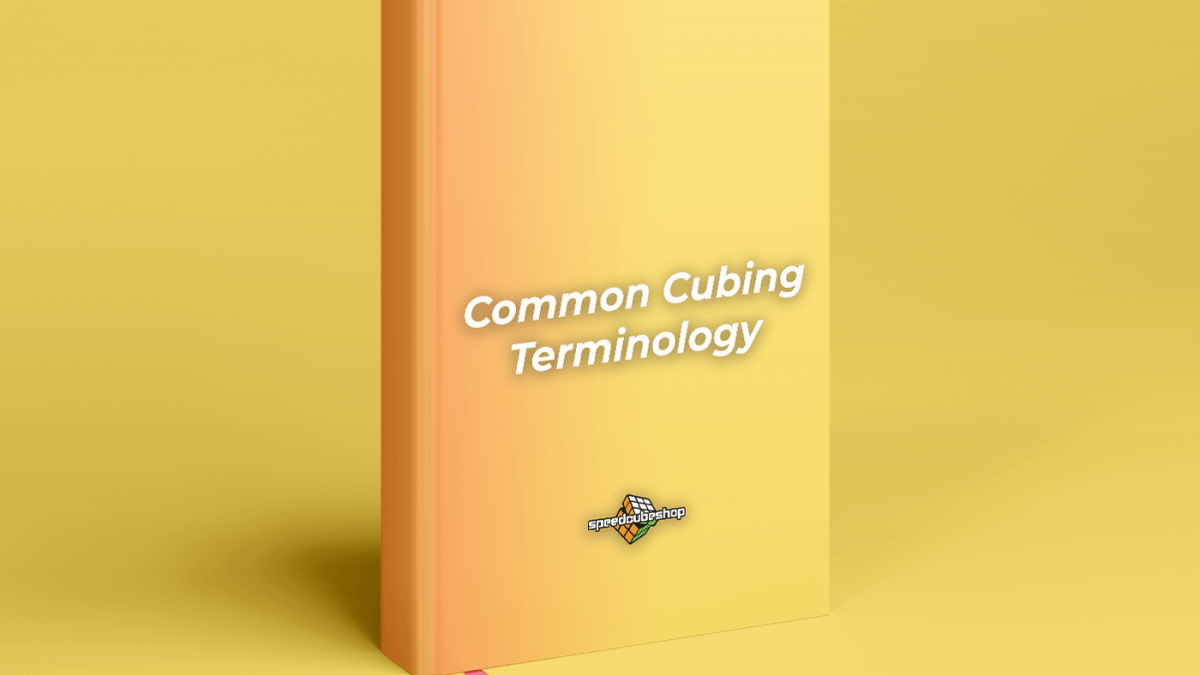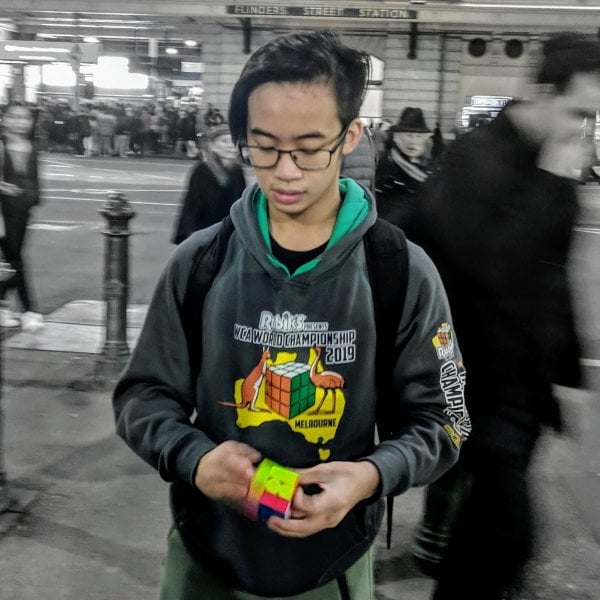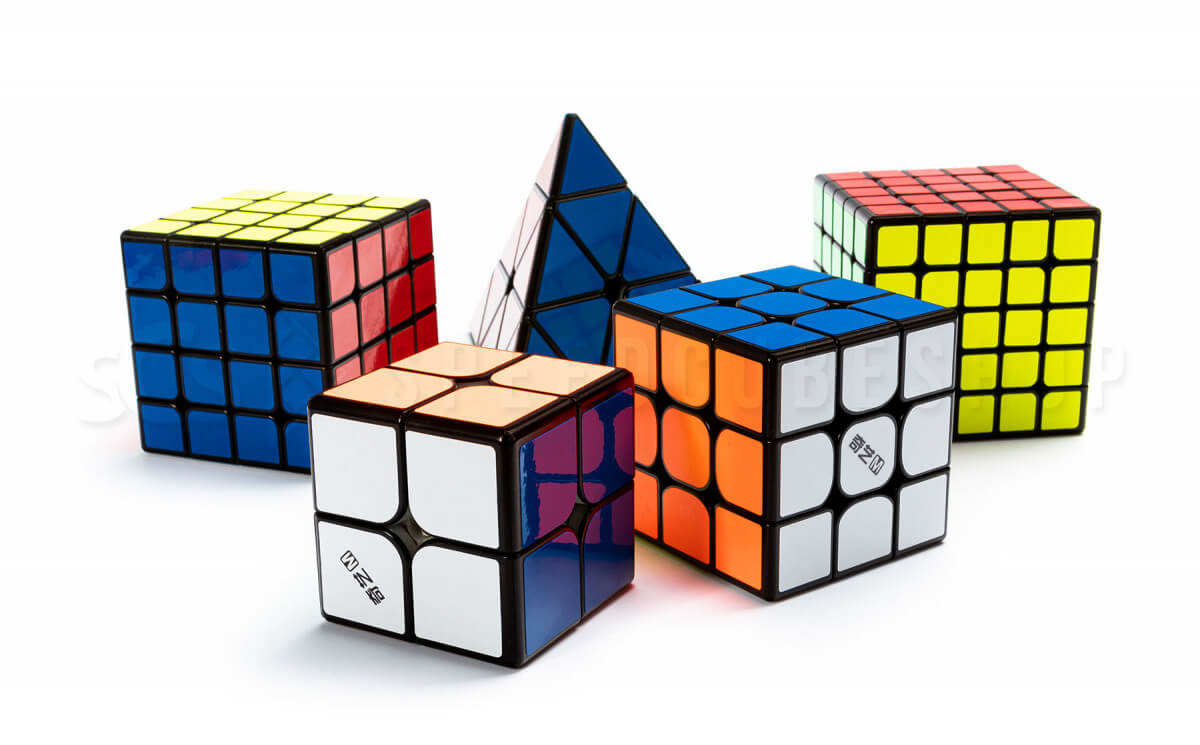Intro
Ever wondered what terms like "corner cutting", "tension" and "squan" mean? Here's our list of common speed cubing terms explained.
3x3, 4x4, Squan, OH...
These are common cubing terms for World Cube Association, or WCA events.
| Abbreviation | Full Name |
| 2x2, 3x3, 4x4, 5x5... etc | Same as abbreviation |
| Squan, Sq1 | Square-1 |
| Mega | Megaminx |
| OH | One Handed |
| Pyra | Pyraminx |
| 3BLD, 4BLD, 5BLD | 3x3 Blindfolded, 4x4 Blindfolded, 5x5 Blindfolded |
| FMC | Fewest Moves Challenge |
| MBLD | Multi Blind (Multiple 3x3s Blindfolded) |
| Big Cubes | Refers to puzzles larger than 3x3 |
Corner Cutting
Pop
A "pop" is when a piece of a puzzle is dislodged and is removed from the puzzle. This can occur with edge pieces on 3x3s, although may be more common with larger NxN puzzles.
According to article 5 of the World Cube Association regulations, "if a puzzle defect occurs during an attempt", including a pop, "the competitor may choose to either repair the defect and continue the attempt, or to stop the attempt". This means if a pop occurs in an official competition, you are permitted to find the piece that put it back into your puzzle and continuing solving.
To prevent popping, we advise checking your tensions, ensuring that they are not too loose and keeping your cube lubricated with a quality speed cube lubricant. Most modern puzzles can work at tighter tensions without sacrificing performance in regard to corner-cutting.
Lockup
A lockup is when two or more pieces get caught on each other, enough so that turning becomes impossible. This can occur on older puzzles, that have more "square" piece design, but can also happen on newer puzzles with looser tensions. Internal lockups, lockups that occur on pieces that are within the cube, not visible without disassembly, also commonly occur on puzzles such as 4x4 and 6x6. These puzzles have a hidden fifth layer than can get caught on other pieces. To reduce the chances of lockups, using the most recent cubes and making sure that your tensions are not too loose will help in preventing lockups.
Plastic Color
Refer to our plastic color article here.
Magnets
- Magnets increase stability by adding a slight weight increase which in turn promotes a smoother turning feel
- A dramatic increase in turning accuracy is the reason why most speed cubers love magnets
- Cost-effective. Magnetic speed cubes are typically not much more than the non-magnetic counterpart
Refer to our magnets explained article here.
Turns Per Second
A common way to measure and quantify how quickly you turn, calculated by number of turns ÷ number of seconds.
CFOP and its steps
CFOP is currently the most popular speed cubing method for 3x3, and is also commonly used to solve big cubes.
Each letter corresponds to a step of the puzzle, Cross, F2L (first two layers), OLL (orientation of the last layer) and PLL (permutation of last layer).
We recommend checking this playlist from J Perm to learn CFOP, with tutorials for F2L, OLL and PLL.
Roux and its steps
Roux, an alternate speed solving method proposed by Gilles Roux in the early 2000s, is known for its efficiency and low move count by comparison to the CFOP method. However, it is currently far less popular than the CFOP method, although a number of world records and continental records have been set with this method on 3x3.
We recommend checking out SpeedCubeReview's complete Roux method tutorial if you would like to learn the Roux method.
Other 3x3 Methods
Other 3x3 methods include but are not limited to ZZ, and Petrus. There are numerous other methods that are far less popular and less developed.
Premium/Setup Puzzle
A puzzle setup by a seller, usually to fix uneven tensions, lubricating both the core and pieces to reduce spring noise and to bring out that bit of extra performance in a puzzle.
We offer three types of premium puzzles, Supernova, Cosmic, and UniCube, all with their characteristics and price points to fit your budget. Read more here.
Some of our most popular premium puzzles include
$90.70 Let us use our 10 years of custom cube experience to create something special for you. Cosmic cubes are consistently used to break world records and are designed to help you do the same. From the core to the stickers… >> SHOP PRODUCT <<Cosmic GAN 11 M Pro 3x3

$21.94 Tired of dealing with the hassle of setting up your own cube? Would you rather relax knowing that your cube was set up by a professional? If "yes", you have come to the right place! Each Supernova cube comes set-up… >> SHOP PRODUCT <<Supernova RS3 M 2020 3x3

$48.07 The MoYu WeiLong WR M 2020 3x3 is MoYu's new flagship release! Following the popularity of the WeiLong WR M, the WR M 2020 includes updates such as a new internal "track" design and frosted plastic. You will also find… >> SHOP PRODUCT <<UniCube WeiLong WR M 2020

Conclusion
If you would like to learn even more terms, we recommend checking this series of videos from J Perm, with even more speed cubing terms explained.










